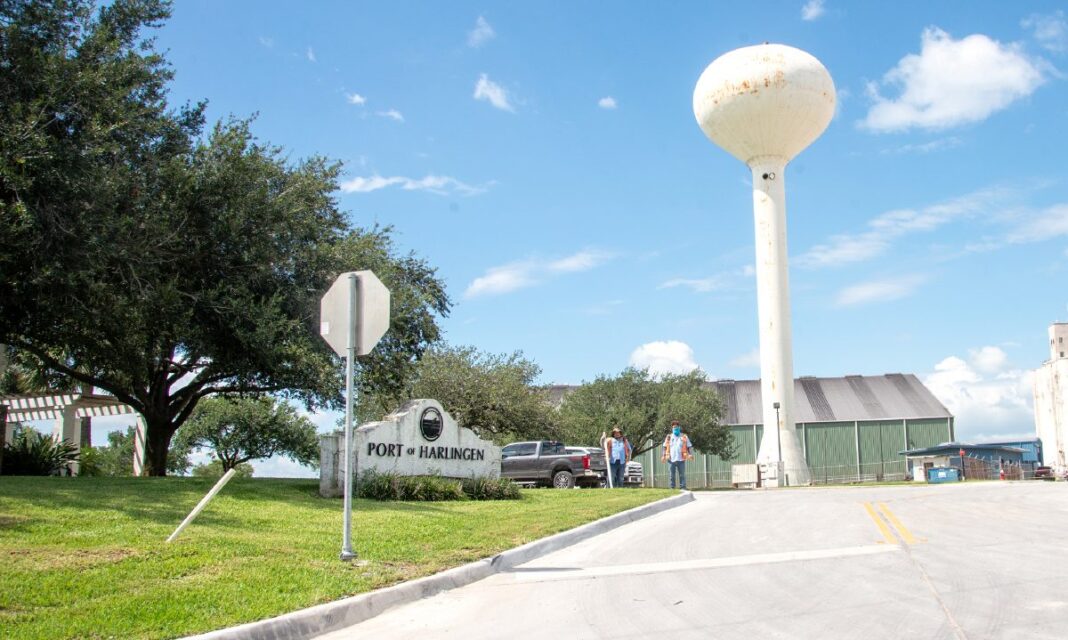The dance to bring several logistics components together simultaneously to make a big port function is incredibly complex.
Disruption to any one of the vital links in that chain throws off the entire performance, and we’re seeing the results at several major ports on the West Coast: Delays, unloaded ships idling offshore for weeks, containers piling up, trucking snarled, delayed deliveries, the works.
Gov. Greg Abbott has released an ad inviting frustrated trans-oceanic shippers to sail into Texas ports instead.
Abbott’s “Escape California” ad was posted on Twitter and says companies that want to avoid bottlenecks at West Coast ports should look to the Gulf of Mexico and Texas.
“Are your products stuck off Long Beach? Texas ports are wide open,” the 30-second promotional video says, claiming it would take less than two weeks to make the trip from California to Texas via the Panama Canal.
“Choose a state that doesn’t see inflation and America’s supply chain backlog as a good thing,” the video says. “Escape California. Everyone’s doing it. Choose Texas.”
But is it feasible? Maybe yes, and maybe no.
Specialized service
Eduardo Campirano is port director and CEO of the Valley’s biggest port, the Port of Brownsville.
Primarily a breakbulk and in-transit port, Brownsville handles commodities like gasoline, diesel, jet fuel and lubricants, and also moves grain, sugar, wind turbine blades and components, and also a lot of slab steel, a semi-finished product.
And business has been very good.
“I can tell you that last year we did about 11.6 million metric tons and we are ahead of schedule this year,” he said. “We’ve been consistently growing over the last five to seven years, like anywhere between 3 and 5 percent. Some years it’s greater, some years it’s not. … last year was a record year as the most we’ve ever handled, and we’re ahead of last year’s pace.”
The shipping Abbott graciously invited to Texas ports primarily involves container ships, on which huge, multi-colored steel boxes are stacked atop each other on deck and sailed across the Pacific Ocean to be unloaded, or not, as the case may be, at West Coast ports.
Campirano says his port can and has handled container shipping but cautions it is a highly specialized mode of transporting goods, and the big ports which handle large numbers of containers have invested heavily to do so.
“Just recently we had a service that was working quite well, but unfortunately they ran into some financial problems and wound up in bankruptcy,” Campirano said. “It was between Brownsville and Florida, primarily centered on the ports of Manatee and Tampa Bay. So yes, we have the capability of handling containers, but when you start getting into those big numbers then it becomes a much, much different kind of operation. It’s a pretty specialized service.”
A draft problem
The movement of manufactured goods from Asia to the rest of the world primarily involves container ships. And for many maritime companies, super-sized is definitely better.
Container ships have grown enormous, all the way to a new class of ship called a ULCS, or Ultra Large Container Ship. The issue for these massive craft when it comes to Texas waters is their draft, or how much water they need under the keel, which averages about 16.5 meters, or 54 feet.
And the Brownsville Ship Channel is only 42 feet deep; the Port of Harlingen’s entryway is the Arroyo Colorado, dredged to just 12 feet.
“Half of those vessels that are off the coast of LA/Long Beach can’t get through the Panama Canal, they’re too big,” Campirano said.
But it is possible for regular container cargo ships to dock at the Port of Brownsville or other Texas ports, since their average draft is about 8.3 meters, or 27 feet.
“Even when the canal was expanded (in 2016) there were already vessels out there which are too big to go through the new, expanded canal,” Campirano said. “Those vessels in that trade, even in Panama today, you have vessels lined up on the Pacific side with containers that are offloaded to smaller vessels that go through the canal.”
Can Texas ports handle some of this traffic?
“Probably the ones that would be capable if the system would support it, the two ports that I’m aware of that handle containers of any size are, of course, Houston, and they have a terminal just for that, with equipment and everything,” Campirano said. “And then Freeport does handle some containers.”
No end in sight
If anything, the chaos at the big West Coast ports like Los Angeles and Long Beach is becoming worse.
On Tuesday, the Marine Exchange of Southern California, which monitors port activity, reported the backlog of container ships off the coast had reached a record high, with 111 container vessels waiting to unload off the twin ports of Los Angeles and Long Beach.
The Biden administration has promised to ease the backlog and get traffic moving again by pushing the ports to run around the clock.
But Campirano says ports are operating at capacity and are 24/7 operations already, while others have noted truck drivers can’t work 24/7 because it’s a violation of federal law. Truckers can only put in a 14-hour day max, with 11 of those hours spent actually driving.
“That system is a logistics chain that needs to be in place and work, and I guess during the pandemic it got fractured,” he said of the West Coast ports. “You hear the same complaints everywhere: Lack of trucks, lack of truck drivers, lack of chassis (the frame for the containers that attaches to the truck bed). All of these things added up over time.”
“I guess those are the biggest issues that need to be addressed in some form or fashion,” he added. “Will it? I’m a firm believer that the market will find a way, and it may be there will be a new dynamic. Maybe you’ll see a lot of smaller vessels going to more strategic locations in the country, like Texas, they could come to Brownsville and not be the mega-ships anymore. I guess we’ll just wait and see.”
Texas ports facts:
State ranks No. 2 in nation for waterborne commerce, with 616 million tons of foreign and domestic cargo, generating $450 billion in total economic value for Texas. That represents 25 percent of Texas’ gross domestic product.
Texas has led the nation in exports for 17 consecutive years. $7.8 billion of state and local taxes are created due the economic activity of Texas ports.
Three Texas ports rank in the top five in total domestic tonnage: Port Houston (2nd), Port of Beaumont (4th) and Port of Corpus Christi (5th).
Source: Texas Ports Association
Valley ports:
>> Port of Brownsville
>> Port of Port Isabel
>> Port of Harlingen
>> Port of Port Mansfield





